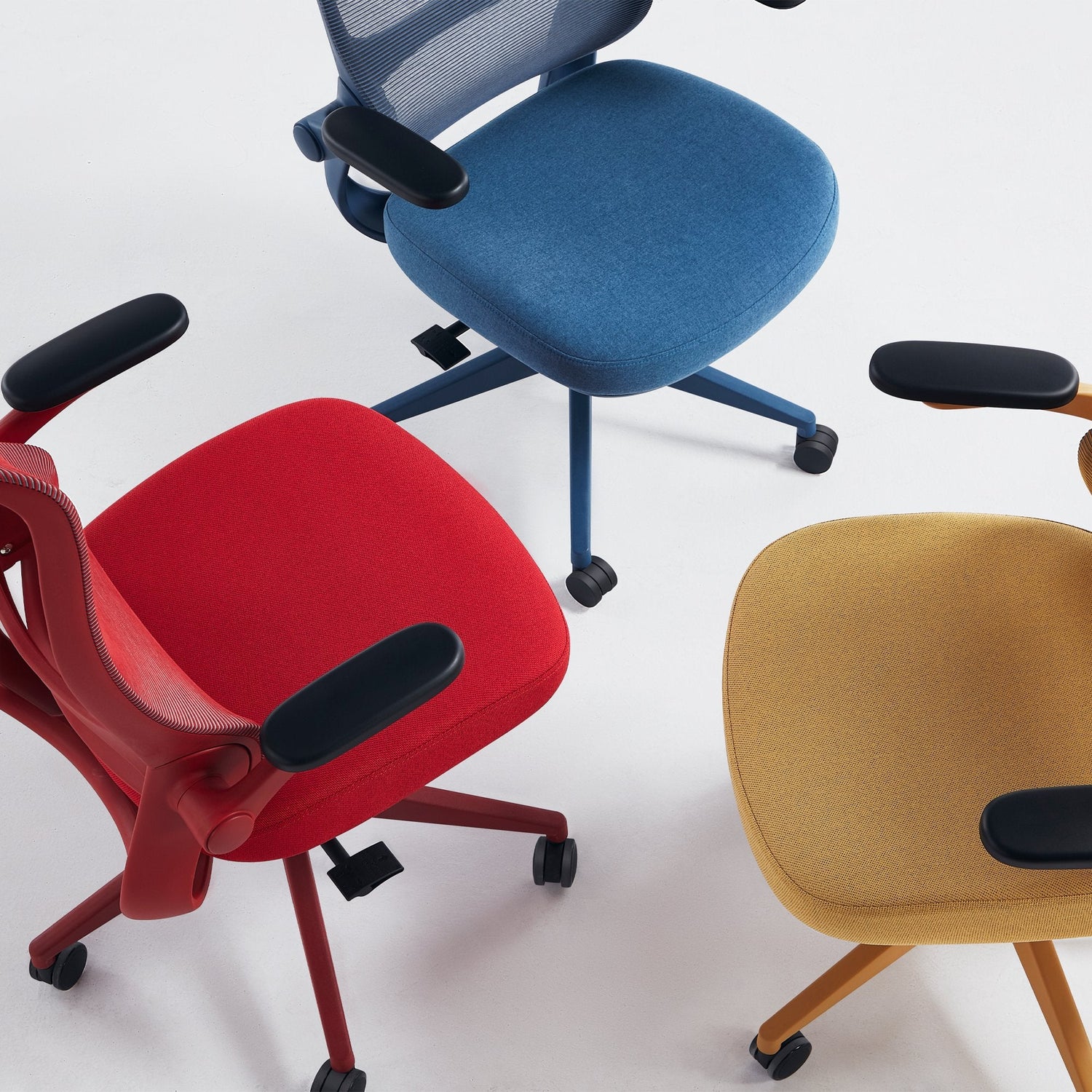Votre panier est vide
Continuer les achatsVous possédez un compte ?
Connectez-vous pour payer plus vite.

All Products
Explore the full range of Sunaofe's ergonomic office furniture, crafted to enhance...
Vous possédez un compte ?
Connectez-vous pour payer plus vite.

Explore the full range of Sunaofe's ergonomic office furniture, crafted to enhance...
30-Day Money Back + Seel Insured
Eco & Ergo! Exclusive Design
Save 10% Now! Code: Sunaofe25
Ergonomic office chairs have been designed to provide the user with the utmost comfort possible. Do you ever wonder why they universally incorporate tilt mechanisms?
As a staff member who requested to stay at the office for more than 8 hours, lying flat becomes a luxury. The satisfying backwards of office chairs isn’t just a trend; it’s ergonomic engineering at work. Maintaining a static sitting position for prolonged periods can strain muscles, compress spinal discs, and reduce blood flow to the affected areas. Lying down at the right time can help alleviate body discomfort.
But when the tilt mechanism fails, leaving your chair rigid, uneven, or refusing to “rotate flat”, it transforms a supportive throne into a regular chair. This office chair tilt mechanism repair guide explains why the tilt mechanism is not functioning properly and describes the necessary steps to repair it.
Tilt mechanisms control reclining. Therefore, "not rotating flat" refers to reclining, not 360-degree swivel rotation. When users say their chair "won't rotate flat," they usually mean below both issues:
You tilt back, but when you release the pressure, the chair stays reclined or only partially returns, leaving you feeling as though you’re perpetually sliding backwards. It refuses to “lock" or settle into a truly flat, neutral sitting position.
When you lean back, one side moves more than the other, or the whole mechanism feels loose, wobbly, or catches abruptly. Sitting flat might feel precarious or uneven.
Dust, hair, and spilt liquids (especially those containing sugar) infiltrate the complex gears, springs, and pivots of the tilt mechanism. This grime acts like abrasive glue, gumming up moving parts and stopping the mechanism from fully reclining.
Factory grease dries out, hardens, or gets washed away by cleaning agents over time. Without proper lubrication, metal parts grind against each other, springs bind, and the mechanism struggles to move freely or return to its neutral position. Sunaofe’s office chairs support a 5-year warranty.
Plastic or nylon bushings act as low-friction interfaces between metal parts. Constant stress and friction wear these down, creating slop (play or wobble) or misalignment.
A broken spring is a classic case of "stuck in recline." If a spring snaps or loses elasticity, the chair backrest lacks the force to pull itself to a level position.
If the knob controlling tilt tension adjustment is broken internally, the office chair won’t stay upright. If tension fails, it might either be impossibly stiff or offer no resistance at all.

Repairing a tilt mechanism requires patience, basic tools (such as screwdrivers, Allen wrenches, needle-nose pliers, lubricant, degreaser, and possibly a pipe wrench or strap wrench), and safety glasses. Always consult your chair’s manual first if available.
Remove the chair base (including the wheels) to prevent rolling. If you can’t operate it, please refer to our article "How to disassemble an office chair".
Crucially: Release all pressure from the gas cylinder. Fully extend the chair height. If replacing the cylinder is part of the fix, research safe removal procedures before starting – gas cylinders are pressurised.
Locate and remove the bolts that secure the seat cushion to the frame. Lift the cushion away to expose the tilt mechanism, which is mounted on top of the gas cylinder.
Notes: These are usually four large bolts accessible from the top of the seat pan (under the cushion or through the covers) or underneath.
In this step, you are asked to look for obvious broken parts, excessive rust, or massive debris clumps. Check springs for breaks or stretching. Wiggle components to feel for slop in bushings or pivots.
Clean: Liberally spray a degreaser onto the mechanism, focusing on pivots, springs, and gears. Scrub stubborn grime with stiff brushes and wipe with a soft cloth.
Apply a light coating of dry lubricant to all moving parts, including pivot points, spring coils, gear teeth, and sliding surfaces.
Notes: Avoid using excess oils or WD-40 (a multi-purpose lubricant and corrosion inhibitor), as they attract dust.
Carefully lower the seat pan back onto the mechanism.
Above components, you can purchase the kits from the brand. Otherwise, it is challenging to source exact matches on the market. As a responsible office furniture brand, Sunaofe wants you to be fully satisfied with your purchase, but they understand that sometimes things don’t work out.
For ergonomic office chairs, they stand behind the quality of our products with a comprehensive warranty. The warranty is 5 years. Of course, if you encounter any defects within 30 days of receiving your item, they can provide a repair or replace it.
To make returns easy, please email your return request, including your order number and the reason for the return. Their customer service will provide you with a return confirmation email notification from Sunaofe to proceed.
How Should You Adjust the Office Chair Tilt
Be the first to know about new collections and exclusive offers.
